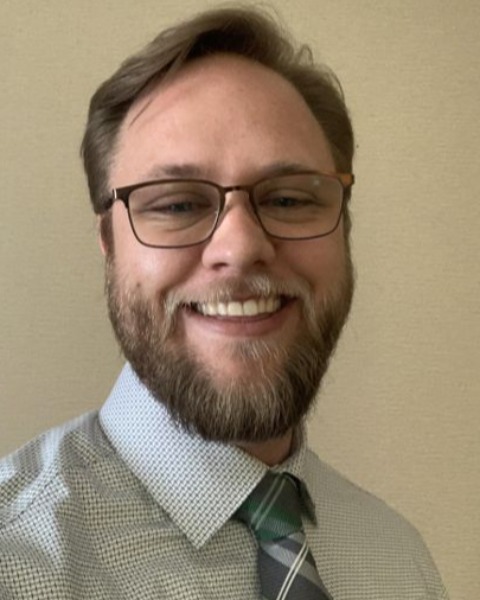Potable Reuse
Monitoring Membrane Integrity for Potable Reuse: Correlating Surrogate Organisms with Pathogen Removal
Thursday, April 20, 2023
2:30 PM - 3:30 PM PST

Larry Morris
Senior R&D Scientist
Kubota Membrane USA Corporation
CANTON, OH
Kaitlin Gellerman, PE
Project Manager
Black & Veatch
Walnut Creek, CA
Main Presenter(s)
Track Facilitator(s)
Membrane bioreactors (MBR) have proven their ability to treat wastewater in an effective manner; however, there remains some question regarding a convincing means to monitor MBR integrity in potential potable reuse treatment trains. To this end, surrogate microorganisms have been sampled in parallel with human pathogens to establish quantifiable correlations.
There are several methods for monitoring membrane integrity through surrogacy, for example, turbidity, total suspended solids, and operational parameters. Those surrogates will be reported elsewhere. Microorganism surrogates have been mostly chosen by size similarity to their human pathogen; male specific and somatic coliphages for enterovirus and clostridium perfringens for both protozoa organisms Giardia and Cryptosporidium.
In addition to frugality and reasonable turn-around -times, microorganism surrogates are almost always present in plant influent water. In the case of each surrogate sampled, there were no instances of censored samples in the influent; censored MBR filtrate samples were observed but this is somewhat of a non-issue as the calculated LRV will be a lower limit. Meanwhile, pathogen sampling can be an issue on both sides of the membrane. Cryptosporidium presented quite an issue with half of all influent samples being censored and all effluent samples censored. Even composite filtrate samples presented problems as almost all filtrate samples of pathogens were censored.
Giardia removal was consistently 4.0 to greater than 6.0 LRVs during the 12-month study, without an instance of censored influent sample. This speaks well of the MBR performance, but there is no direct correlation when examining samples obtained on the same day. Although, if you compare the fifth percentile LRVs of the cumulative study, C. perfringens should serve as a conservative surrogate for Giardia. Although the data set is smaller due to censored influent samples, Cryptosporidium showed a slight correlation with a correlation coefficient of 0.666. Additionally, fifth percentile Cryptosporidium LRVs are well mirrored by C. perfringens.
Considering the reality of monitoring membrane integrity in potable reuse system, it will be prudent to use more than one surrogate. While the coliphages and C. perfringens can provide a decent picture of membrane integrity on pathogen removal, other surrogates such as turbidity can provide real time integrity information. Turbidimeters are on the “front line” of monitoring, but surrogate microorganisms can be a powerful monitoring tool allowing for municipalities to estimate their current pathogen removal performance.
There are several methods for monitoring membrane integrity through surrogacy, for example, turbidity, total suspended solids, and operational parameters. Those surrogates will be reported elsewhere. Microorganism surrogates have been mostly chosen by size similarity to their human pathogen; male specific and somatic coliphages for enterovirus and clostridium perfringens for both protozoa organisms Giardia and Cryptosporidium.
In addition to frugality and reasonable turn-around -times, microorganism surrogates are almost always present in plant influent water. In the case of each surrogate sampled, there were no instances of censored samples in the influent; censored MBR filtrate samples were observed but this is somewhat of a non-issue as the calculated LRV will be a lower limit. Meanwhile, pathogen sampling can be an issue on both sides of the membrane. Cryptosporidium presented quite an issue with half of all influent samples being censored and all effluent samples censored. Even composite filtrate samples presented problems as almost all filtrate samples of pathogens were censored.
Giardia removal was consistently 4.0 to greater than 6.0 LRVs during the 12-month study, without an instance of censored influent sample. This speaks well of the MBR performance, but there is no direct correlation when examining samples obtained on the same day. Although, if you compare the fifth percentile LRVs of the cumulative study, C. perfringens should serve as a conservative surrogate for Giardia. Although the data set is smaller due to censored influent samples, Cryptosporidium showed a slight correlation with a correlation coefficient of 0.666. Additionally, fifth percentile Cryptosporidium LRVs are well mirrored by C. perfringens.
Considering the reality of monitoring membrane integrity in potable reuse system, it will be prudent to use more than one surrogate. While the coliphages and C. perfringens can provide a decent picture of membrane integrity on pathogen removal, other surrogates such as turbidity can provide real time integrity information. Turbidimeters are on the “front line” of monitoring, but surrogate microorganisms can be a powerful monitoring tool allowing for municipalities to estimate their current pathogen removal performance.
Learning Objectives:
- Upon completion, participants will be able to identify microorganism surrogates for pathogens.
- Upon completion, participants will be able to specify the need for surrogate correlation to a pathogen at potable reuse treatment plants.
- Upon completion, participants will be able to understand some of the challenges facing MBRs at potable reuse treatment plants.

